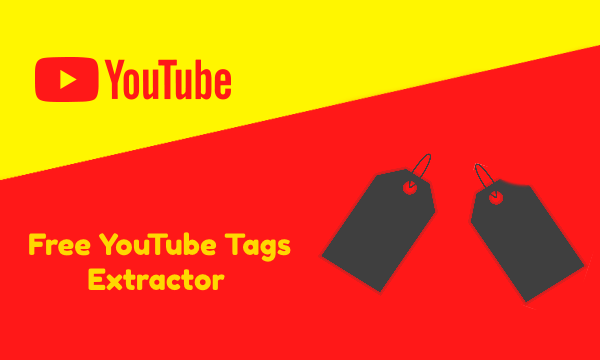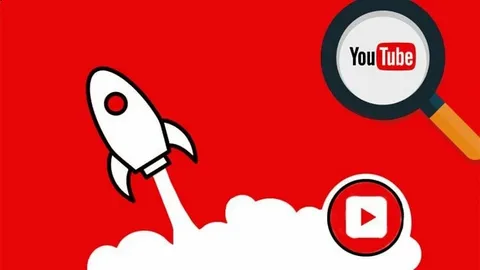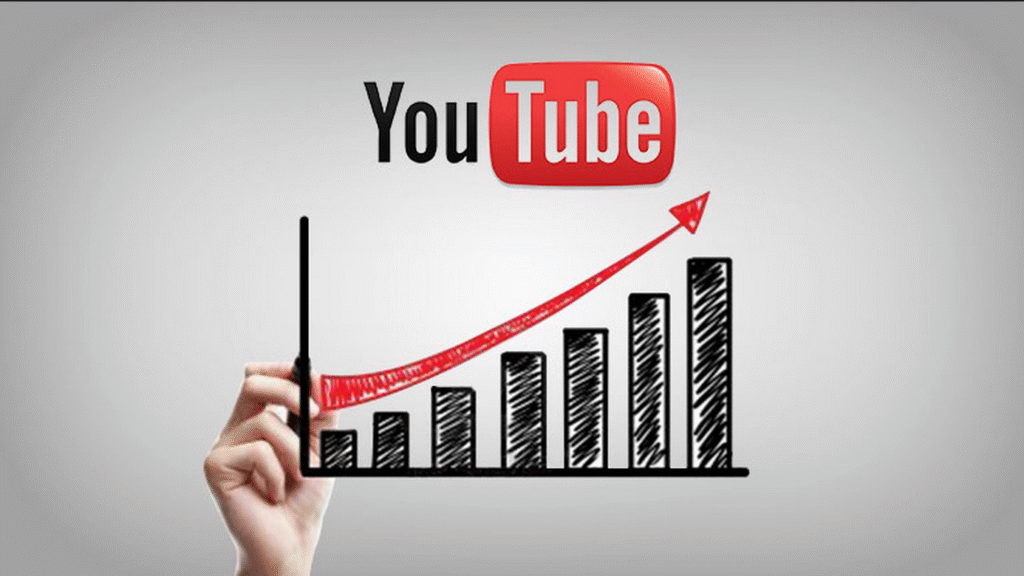In a sea of over 500 hours of video uploaded to YouTube every single minute, your video title is more than just text — it’s your first impression, SEO anchor, and the gateway to clicks. A compelling YouTube video title plays a pivotal role in whether your content is watched, skipped, or buried in the algorithm.
According to YouTube’s Creator Academy, titles and thumbnails are the two most critical elements determining whether someone clicks or scrolls past. Accurate, engaging titles can improve your click-through rate and get your video recommended more often.
Even the best content risks invisibility if paired with a weak title. According to an analysis by vidIQ, creators who optimized titles using emotive keywords and search-friendly structures saw CTR improvements compared to those who didn’t source.
This guide brings together the most effective YouTube title strategies to help improve visibility, attract more viewers, and support steady channel growth.
Top Best Essential YouTube Video Title Tips
1. Use Relevant Keywords
Using keywords that your target audience is actively searching for is crucial for your video’s visibility and discoverability on YouTube. When you include these terms, your content stands a much better chance of appearing in search results and recommendations.
YouTube itself emphasizes the importance of descriptive keywords that clearly signal what your video is about. YouTube’s official help documentation advises creators to identify 1-2 main words that describe your video and feature them prominently in both your description and title.”
This ensures that your video’s topic is immediately clear to both viewers and YouTube’s algorithm. For optimal ranking and readability, it’s a best practice to place your primary keyword near the beginning of your title.
2. Keep It Short and clear (Stick to 45–60 Characters)
YouTube allows up to 100 characters for video titles, but using the full limit isn’t always a good idea. Titles longer than 60–70 characters often get cut off—especially on mobile devices and in search results. When that happens, viewers might miss important parts of your message.
To avoid this, it’s better to keep your titles short and focused.
According to video marketing experts at Semrush, the best length is between 45–60 characters. They explain that shorter titles are more likely to be seen in full, which helps improve your click-through rate.
Put your most important keywords and attention-grabbing words at the start of your title. That way, even if it gets shortened, viewers still understand what your video is about.
Read Here: How to Make a Youtube Channel on Ipad
3. Use Numbers to Catch Attention
Adding numbers to your YouTube titles is a smart way to make your video stand out and tell viewers exactly what they’ll get. Titles like “7 Steps to Master” or “Top 5 Must-Have Gadgets” are eye-catching and show that the video will be clear, structured, and easy to follow.
This tactic isn’t just a trend—it’s backed by research. According to Nielsen’s eye-tracking studies, numbers help grab attention quickly, even in a sea of text. They act like visual anchors, making viewers more likely to stop scrolling and check out your video.
4. Use Emotional and Powerful Words
A good title doesn’t just tell viewers what the video is about—it makes them feel something. Using emotional or strong words can spark curiosity, excitement, urgency, or even surprise. Words like “amazing,” “secret,” “easy,” “warning,” or “must-see” help grab attention fast and make people want to click.
Tools like CoSchedule’s Headline Analyzer have shown that titles with strong emotional value often perform much better. In simple terms, when your title makes people feel something, they’re more likely to watch your video.
Add one or two emotional or powerful words to your title—but keep it natural and relevant to your content.
5. Make Sure Your Title and Thumbnail Match
Your video’s title and thumbnail are the first things viewers notice—and they need to tell the same story. When both are consistent and clearly reflect your video’s content, people understand what to expect and are more likely to click.
YouTube strongly recommends this approach. In their official Creator Academy, they explain that the titles and thumbnails work together to help viewers decide to watch your videos. They also advise that both should accurately show what your video is about.
If your title says one thing but the thumbnail suggests something else, it can confuse or disappoint viewers—leading to fewer views and lower watch time.
To make sure your title and thumbnail work perfectly together, try finalizing your title first before creating the thumbnail. This way, your text and visuals support each other, making your message clearer and more powerful.
6. Be Honest—Don’t Use Misleading Clickbait
Using flashy or misleading titles might seem like a quick way to get more clicks, but it can actually do more harm than good for your channel. Clickbait titles may bring in quick views, but if your content doesn’t match the promise, people will leave fast. This tells YouTube that your video isn’t keeping viewers interested, which can limit how often it’s shown.
YouTube explicitly discourages the use of misleading metadata, which includes titles and thumbnails that do not accurately represent your video’s actual content. If your video doesn’t deliver what the title suggests, it could be flagged—and it will definitely disappoint viewers.
Use titles that are exciting but also honest. When viewers know they can trust your content, they’re more likely to come back for more.
7. Use Brackets or Parentheses to Add Helpful Context
Adding brackets [ ] or parentheses ( ) to your video title is a smart way to give extra info that grabs attention. You can show things like the year ([2025 Guide]), video type ((Tutorial)), who it’s for ([For Beginners]), or a key benefit ((No Experience Needed)). This helps viewers quickly see if the video fits what they’re looking for.
A study cited by HubSpot, referencing data from an Outbrain analysis of 900,000 headlines, found that headlines containing parentheses performed 38% better than those without.
Use one short phrase in brackets or parentheses to make your title more informative without cluttering it.
8. Use Curiosity Gaps to Spark Interest
One smart way to get more clicks is by creating a curiosity gap in your title. This means giving just enough info to make viewers curious—without revealing everything. For example, a title like “You’re Brushing Your Hair Wrong – Here’s Why” makes people want to click to find out what they’re doing wrong.
When done honestly (not misleading), this technique grabs attention and encourages viewers to watch. It works because people naturally want to fill in the blanks and find answers.
Ask a question or hint at a surprising outcome to create intrigue—just make sure your video actually delivers on the title’s promise.
9. Use Hashtags to Help More People Find Your Video
Adding the right hashtags to your YouTube title or description is a great way to make your video easier to find. Hashtags like #vlog, #shorts, or #productivity acts like keywords—when people click or search for those tags, your video can show up in the results.
YouTube highlights the first three hashtags from your description right above your title, so those are the most important ones to choose carefully. Stick to 1 to 3 hashtags that clearly describe your video. Don’t overuse them, though too many hashtags can look spammy and might hurt your video’s performance.
Pick hashtags that match your topic and your audience’s interests. Think of what they’d type in to find videos like yours. You can also generate relevant hashtags using the free Youtube hashtags generator.
10. Match Your Audience’s Language and Style
To really connect with your viewers, your video titles should sound like how your audience talks. Use words, tone, and phrases they’re familiar with. If you’re making videos for teens or young adults, using casual language, popular slang, or meme references can feel more real and relatable. But if your audience is professionals or students, a more clear, formal tone works better and builds trust.
This tip comes from basic marketing rules: when you speak your audience’s language, they’re more likely to feel understood and click. According to Sprout Social, matching your audience’s tone is key to making strong, personal connections online.
11. Use AI Tools to Help You Write Better Titles
With so much content on YouTube, using AI-powered tools can give you a big advantage when creating strong video titles. Tools like TubeBuddy, vidIQ, GravityWrite, and CoSchedule’s Headline Analyzer help you come up with smart, data-backed title ideas—fast.
Just enter your topic or keywords, and these tools can suggest titles that:
- Include the right keywords for better search visibility
- Stay within the best length so they don’t get cut off
- Use emotional and powerful words to boost clicks
- Get a score or feedback to show how likely the title is to perform well
TubeBuddy explicitly states that its AI-powered Title Generator helps creators instantly generate engaging, keyword-rich video titles designed to save time, boost SEO, and increase viewer clicks by providing optimized suggestions.
Use these tools as a starting point—then tweak the suggestions to match your voice and audience.
12. A/B Test Your Titles to See What Works Best
Don’t settle for the first title you come up with. One of the smartest ways to improve your video’s performance is by doing A/B testing—also called split testing. This means trying two different titles (or thumbnails) and seeing which one gets more clicks. Each version is shown to part of your audience, and the results show you which title works better.
Tools like TubeBuddy make it easy to run A/B tests and track the results. You’ll find out what grabs attention and what doesn’t, so you can make better choices for future videos.
Keep testing and improving your titles based on real data. It’s one of the best ways to boost views and grow your channel over time.
13. Use Trends and Timing to Make Your Title More Relevant
To help more people find your video, especially for topics that change often, add timing cues or trend-related phrases to your title. Words like “New,” “Updated,” or “[2025 Guide]” show viewers that your content is current and relevant right now. This works really well for videos about tech, tutorials, tools, news, or anything that changes over time.
Stay aware of what’s trending in your niche, and update your titles as needed to reflect fresh, useful content.
14. Keep Testing and Improving Your Titles Over Time
Writing great YouTube titles isn’t a one-time task—it’s a skill that gets better with practice and regular updates. Use YouTube Studio analytics to track how your titles are doing. Pay attention to metrics like Click-Through Rate (CTR) and average view duration.
If a title gets a lot of clicks but viewers leave quickly, it might be too clickbaity. If your content is good but the title gets a few clicks, it might not be catchy or clear enough.
YouTube recommends experimenting with different titles and thumbnails and learning from the data. You can also update older videos with fresh titles to improve their performance and bring in new views.
Make title improvement a regular part of your content strategy—not just a one-time task.
15. Ask a Question to Make Viewers Curious
Adding a question to your video title is a smart way to grab attention. It makes people curious and encourages them to click to find the answer. This works especially well for how-to videos, problem-solving content, reactions, or storytelling.
When viewers see a question, they naturally want to know the answer—so they’re more likely to watch your video.
Read Here: How to Add Captions to YouTube Shorts
Conclusion
In today’s fast-paced YouTube world, where people scroll quickly and competition is everywhere, your video title is more than just a headline — it’s a key part of your success. It can be the difference between someone skipping your video or stopping to watch it. A strong title not only helps your video show up in search results, but also grabs attention and makes viewers want to click, watch, and stay.
As shown by YouTube and trusted tools like TubeBuddy and vidIQ, the best titles are clear, emotionally engaging, optimized with the right keywords, and matched with the thumbnail and video content. This guide has covered 15 expert strategies — from using power words and numbers to A/B testing and staying on trend — to help you write titles that consistently perform well.
Think of these tips not as one-time tricks, but as a system you can use again and again. Keep testing, analyzing your data, and improving over time. Because when your titles truly connect with your audience’s interests and curiosity, your videos will get the attention and views they deserve.





One Comment